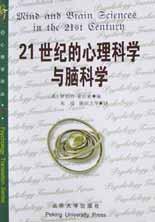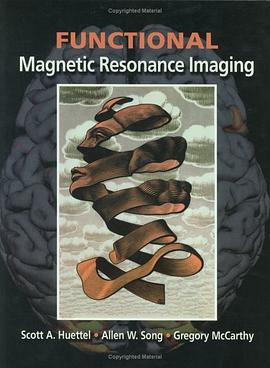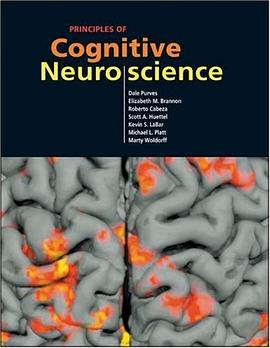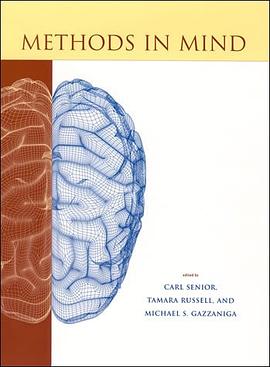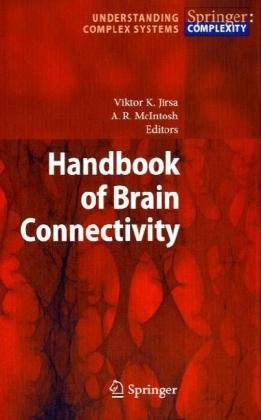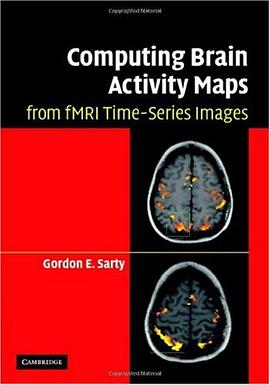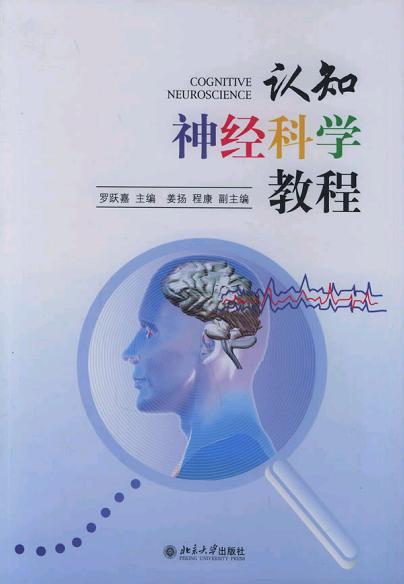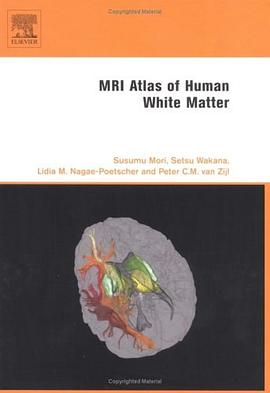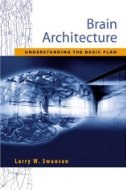认知神经科学
Functional Magnetic Resonance Imaging 豆瓣
作者:
Scott A. Huettel
/
Allen W. Song
…
Sinauer Associates Inc
2004
- 1
This textbook provides a true introduction to functional magnetic resonance imaging (fMRI), which has become the dominant research technique in cognitive neuroscience. Although there is extraordinary interest in fMRI among researchers, instructors, and students alike, its instruction has faced a set of challenges. Existing texts are targeted toward practicing scientists in the field, and assume a level of expertise not possessed by most students. Furthermore, most students do not have access to fMRI equipment and data, so they have no opportunity to gain hands-on experience. This textbook overcomes these limitations by presenting a comprehensive overview of all aspects of fMRI, designed with undergraduate students, graduate students, and beginning researchers in mind.
The book progresses through 15 chapters. It begins with an introduction to fMRI and its history, principles, and technical requirements. The following several chapters cover the physics of fMRI, with careful attention devoted toward relating abstract concepts to research applications. Subsequent chapters cover the basic biological properties of the fMRI signal, including its spatial and temporal properties and its variability. Systematic discussions of research design and experimental analysis are included, and will be of particular interest to the many students with graduate or medical school aspirations. The book ends with discussions of future directions for fMRI, not only in terms of advances in understanding the brain and methodological improvements, but also in the integration of fMRI with other research techniques.
Included with every copy of the book is a comprehensive CD-ROM containing study questions for each chapter of the book, suggested lab exercises, fMRI data sets including both functional and anatomical data, a tools section, and compete glossary.
The authors' goal was to create a book that is sufficiently scientifically rigorous for researchers in the field, but also accessible enough to be easily read and understood by beginning students. All chapters are copiously illustrated, with key terms described in a marginal glossary, and have annotated lists of references. The book can be used as the primary text for classes in fMRI, or as a secondary text for cognitive neuroscience, research methods, or other courses.
The book progresses through 15 chapters. It begins with an introduction to fMRI and its history, principles, and technical requirements. The following several chapters cover the physics of fMRI, with careful attention devoted toward relating abstract concepts to research applications. Subsequent chapters cover the basic biological properties of the fMRI signal, including its spatial and temporal properties and its variability. Systematic discussions of research design and experimental analysis are included, and will be of particular interest to the many students with graduate or medical school aspirations. The book ends with discussions of future directions for fMRI, not only in terms of advances in understanding the brain and methodological improvements, but also in the integration of fMRI with other research techniques.
Included with every copy of the book is a comprehensive CD-ROM containing study questions for each chapter of the book, suggested lab exercises, fMRI data sets including both functional and anatomical data, a tools section, and compete glossary.
The authors' goal was to create a book that is sufficiently scientifically rigorous for researchers in the field, but also accessible enough to be easily read and understood by beginning students. All chapters are copiously illustrated, with key terms described in a marginal glossary, and have annotated lists of references. The book can be used as the primary text for classes in fMRI, or as a secondary text for cognitive neuroscience, research methods, or other courses.
Principles of Cognitive Neuroscience 豆瓣
作者:
Dale Purves
/
Elizabeth M. Brannon
…
Sinauer Associates Inc
2007
- 11
This book, written by seven leaders in the field, is intended to inform readers at all levels about the growing canon of cognitive neuroscience, and to make clear the many challenges that remain to be solved by the next generation. Chapters begin with a brief introduction and end with a summary; in addition to the narrative text, richly illustrated in full color, each chapter includes boxed material on topics of special interest. Extensive references to useful reviews, important original papers, and books are provided. In addition to an appendix that covers the essentials of neural signaling and an extensive glossary of key terms, each copy comes with Sylvius 4, which includes an interactive tutorial on human neuroanatomy and a digital atlas of human brain structure.
追寻记忆的痕迹 豆瓣 Goodreads
In Search of Memory
9.1 (11 个评分)
作者:
[美国] 埃里克·坎德尔
译者:
罗跃嘉
中国轻工业出版社
2007
- 1
书中作者追溯了维也纳的儿时经历引起他对记忆的强烈兴趣,这一兴趣首先体现在对历史和精神分析的爱好,然后转到脑生物学领域,跨越认知心理学、神经科学、细胞生物学等多个学科,最终从细胞和分子层面上破译了人类记忆密码,从而获得2000年诺贝尔生理学或医学奖。
为了满足人们对追寻记忆痕迹的好奇和渴求,坎德尔教授娓娓道来,把个人成长融入科学发展历程,讲述他传奇的人生探索之旅,我们可以从中领略大师的治学之道和大家风范。
这是一位科学巨匠走过的半个多世纪的心路历程。他对前辈和同行的尊重与谦和,对年轻一代的提携和鼓励,对故土维也纳的眷念,以及身为犹太人所特有的民族自豪感,这一切都深深地打动了我们,一种发自内心的敬意和钦佩之情油然而生。
为了满足人们对追寻记忆痕迹的好奇和渴求,坎德尔教授娓娓道来,把个人成长融入科学发展历程,讲述他传奇的人生探索之旅,我们可以从中领略大师的治学之道和大家风范。
这是一位科学巨匠走过的半个多世纪的心路历程。他对前辈和同行的尊重与谦和,对年轻一代的提携和鼓励,对故土维也纳的眷念,以及身为犹太人所特有的民族自豪感,这一切都深深地打动了我们,一种发自内心的敬意和钦佩之情油然而生。
Methods in Mind 豆瓣
作者:
Senior, Carl (EDT)/ Russell, Tamara (EDT)/ Gazzaniga, Michael S. (EDT)
Mit Press
2006
- 6
The evolution of cognitive neuroscience has been spurred by the development of increasingly sophisticated investigative techniques to study human cognition. In Methods in Mind, experts examine the wide variety of tools available to cognitive neuroscientists, paying particular attention to the ways in which different methods can be integrated to strengthen empirical findings and how innovative uses for established techniques can be developed. The book will be a uniquely valuable resource for the researcher seeking to expand his or her repertoire of investigative techniques.
Each chapter explores a different approach. These include transcranial magnetic stimulation, cognitive neuropsychiatry, lesion studies in nonhuman primates, computational modeling, psychophysiology, single neurons and primate behavior, grid computing, eye movements, fMRI, electroencephalography, imaging genetics, magnetoencephalography, neuropharmacology, and neuroendocrinology. As mandated, authors focus on convergence and innovation in their fields; chapters highlight such cross-method innovations as the use of the fMRI signal to constrain magnetoencephalography, the use of electroencephalography (EEG) to guide rapid transcranial magnetic stimulation at a specific frequency, and the successful integration of neuroimaging and genetic analysis. Computational approaches depend on increased computing power, and one chapter describes the use of distributed or grid computing to analyze massive datasets in cyberspace. Each chapter author is a leading authority in the technique discussed.
Contributors:
Peyman Adjamian, Peter A. Bandettini, Mark Baxter, Anthony S. David, James Dobson, Ian Foster, Michael Gazzaniga, Dietmar G. Heinke, Stephen Hall, John M. Henderson, Glyn W. Humphreys, Andreas Meyer-Lindenburg, Venkata Mattay, Elisabeth A. Murray, Gina Rippon, Tamara Russell, Carl Senior, Philip Shaw, Krish D. Singh, Marc A. Sommer, Lauren Stewart, John D. Van Horn, Jens Voeckler, Vincent Walsh, Daniel R. Weinberger, Michael Wilde, Jeffrey Woodward, Robert H. Wurtz, Eun Young Yoon, Yong Zhao
Each chapter explores a different approach. These include transcranial magnetic stimulation, cognitive neuropsychiatry, lesion studies in nonhuman primates, computational modeling, psychophysiology, single neurons and primate behavior, grid computing, eye movements, fMRI, electroencephalography, imaging genetics, magnetoencephalography, neuropharmacology, and neuroendocrinology. As mandated, authors focus on convergence and innovation in their fields; chapters highlight such cross-method innovations as the use of the fMRI signal to constrain magnetoencephalography, the use of electroencephalography (EEG) to guide rapid transcranial magnetic stimulation at a specific frequency, and the successful integration of neuroimaging and genetic analysis. Computational approaches depend on increased computing power, and one chapter describes the use of distributed or grid computing to analyze massive datasets in cyberspace. Each chapter author is a leading authority in the technique discussed.
Contributors:
Peyman Adjamian, Peter A. Bandettini, Mark Baxter, Anthony S. David, James Dobson, Ian Foster, Michael Gazzaniga, Dietmar G. Heinke, Stephen Hall, John M. Henderson, Glyn W. Humphreys, Andreas Meyer-Lindenburg, Venkata Mattay, Elisabeth A. Murray, Gina Rippon, Tamara Russell, Carl Senior, Philip Shaw, Krish D. Singh, Marc A. Sommer, Lauren Stewart, John D. Van Horn, Jens Voeckler, Vincent Walsh, Daniel R. Weinberger, Michael Wilde, Jeffrey Woodward, Robert H. Wurtz, Eun Young Yoon, Yong Zhao
Handbook of Brain Connectivity 豆瓣
作者:
Jirsa, Viktor K. (EDT)
/
Mcintosh, A. R. (EDT)
Springer Verlag
2007
Our contemporary understanding of brain function is deeply rooted in the ideas of the nonlinear dynamics of distributed networks. Cognition and motor coordination seem to arise from the interactions of local neuronal networks, which themselves are connected in large scales across the entire brain. The spatial architectures between various scales inevitably influence the dynamics of the brain and thereby its function. But how can we integrate brain connectivity amongst these structural and functional domains?
Our Handbook provides an account of the current knowledge on the measurement, analysis and theory of the anatomical and functional connectivity of the brain. All contributors are leading experts in various fields concerning structural and functional brain connectivity. In the first part of the Handbook, the chapters focus on an introduction and discussion of the principles underlying connected neural systems. The second part introduces the currently available non-invasive technologies for measuring structural and functional connectivity in the brain. Part three provides an overview of the analysis techniques currently available and highlights new developments. Part four introduces the application and translation of the concepts of brain connectivity to behavior, cognition and the clinical domain.
Our Handbook provides an account of the current knowledge on the measurement, analysis and theory of the anatomical and functional connectivity of the brain. All contributors are leading experts in various fields concerning structural and functional brain connectivity. In the first part of the Handbook, the chapters focus on an introduction and discussion of the principles underlying connected neural systems. The second part introduces the currently available non-invasive technologies for measuring structural and functional connectivity in the brain. Part three provides an overview of the analysis techniques currently available and highlights new developments. Part four introduces the application and translation of the concepts of brain connectivity to behavior, cognition and the clinical domain.
Computing Brain Activity Maps from fMRI Time-Series Images 通过功能性核磁共振时序造影计算大脑活动图谱 豆瓣
作者:
Gordon E. Sarty
Cambridge University Press
2006
- 11
fMRI is a very popular method for researchers and clinicians to image human brain activity in response to given mental tasks. This book presents a comprehensive review of the methods for computing activity maps, while providing an intuitive and mathematical outline of how each method works. The approaches include statistical parametric maps (SPM), hemodynamic response modeling and deconvolution, Bayesian, Fourier and nonparametric methods. The newest activity maps provide information on regional connectivity and include principal and independent component analysis, crisp and fuzzy clustering, structural equation modeling, and dynamic causal modeling. Preprocessing and experimental design issues are discussed with references made to the software available for implementing the various methods. Aimed at graduate students and researchers, it will appeal to anyone with an interest in fMRI and who is looking to expand their perspectives of this technique.
认知神经科学教程 豆瓣
作者:
罗跃嘉
2006
在新世纪来临之际,世界各国科学家对发展意识科学寄予了厚望,正在从不同的角度对这个复杂的科学问题进行探索。一方面期望能够逐步了解人脑的这种最令人迷惑不解的功能,同进也期望由此带动人工智能,机器人和脑型计算机等第三代信息产业的发展。研究脑和意识的关系,实质上是要回答从物质如何转变为精神这样一个最根本性的科学命题。因此,这是一项极其困难极具挑战性的前沿科学。如果说在过去的一个世纪中神经科学取得了奇迹般的成就,那么毫无疑问,在今后的100年内,更令人鼓舞的突破必将出现在对脑的认知、注意和思维等意识过程的认识方面。智慧的人类将运用自己的智慧去揭示智慧的奥秘。
本书的作者来自中国大陆、中国香港、美国、日本、英国、丹麦等国家和地区,都是科研一线的研究骨干、承担繁重的科研工作,其中包括若干位中国国家杰出青年基金获得者、教育部“长江学者”特聘教授和中国科学院“百入计划”入选者,也有在欧美知名大学担任正教授、副教授、助理教授和实验室主任者。作者们挤出时间认真完成了写作,其中三位作者还承担了两章的撰写。从2003年初收到第一篇稿件,到2005年6月收齐最后一篇,经过整整二年半的时间,可见者的艰难。
本书的作者来自中国大陆、中国香港、美国、日本、英国、丹麦等国家和地区,都是科研一线的研究骨干、承担繁重的科研工作,其中包括若干位中国国家杰出青年基金获得者、教育部“长江学者”特聘教授和中国科学院“百入计划”入选者,也有在欧美知名大学担任正教授、副教授、助理教授和实验室主任者。作者们挤出时间认真完成了写作,其中三位作者还承担了两章的撰写。从2003年初收到第一篇稿件,到2005年6月收齐最后一篇,经过整整二年半的时间,可见者的艰难。
MRI Atlas of Human White Matter (精装) 豆瓣
作者:
S. Mori
Elsevier Science
2005
- 6
" In this atlas, Mori and colleagues provide a much-needed reference for researchers and clinicians wishing to deepen their understanding of the human brain white matter. This book will be of interest to a wide variety of audiences including radiologists, neurologists, neurosurgeons and neuroscientists from a number of diverse disciplines. Researchers and clinicians may use the atlas both as a benchmark to which they can compare tractography results and as a reference map for determining normal fiber orientation. The book is organized into 4 chapters that provide detailed explanations and high-quality illustrations. In summary, this atlas should be considered an essential resource for clinicians and researchers wishing to further their understanding of the human brain white matter and the complex inter-relationships that exist among the white matter tracts." CONCEPTS IN MAGNETIC RESONANCE PART A, Vol. 28A(2) 180-181, P.R. Szeszko, The Zucker Hillside Hospital, Dpt. of Psychiatry Research, NY, USA and P.B. Kingsley, Dpt. of Radiology/MRI, North Shore University Hospital, Manhasset, NY, USA "This is one of the first books to provide highly detailed illustrations of human white matter created on the basis of high-resolution diffusion tensor imaging (DTI) and 3D tract reconstruction. The atlas takes the reader on a journey through the 3D anatomy of the major white matter fiber bundles of the brain. The authors give a concise and helpful introduction to the four main categories of white matter tracts. The central part of the atlas is comprised of detailed, good-quality, high resolution consecutive DTI color maps in each orthogonal plane, accompanied by color-shaded parcellation maps highlighting the major white matter tracts. Summing up: Scrolling through the atlas was truly pleasurable." CONCEPTS IN MAGNETIC RESONANCE PART A, Vol. 28A(2) 181-182 (2006), Chan Ling Ling, M.D., H. Rumpel, Ph.D., Dpt. of Diagnostic Radiology, Singapore General Hospital, Singapore
" In this atlas, Mori and colleagues provide a much-needed reference for researchers and clinicians wishing to deepen their understanding of the human brain white matter. This book will be of interest to a wide variety of audiences including radiologists, neurologists, neurosurgeons and neuroscientists from a number of diverse disciplines. Researchers and clinicians may use the atlas both as a benchmark to which they can compare tractography results and as a reference map for determining normal fiber orientation. The book is organized into 4 chapters that provide detailed explanations and high-quality illustrations. In summary, this atlas should be considered an essential resource for clinicians and researchers wishing to further their understanding of the human brain white matter and the complex inter-relationships that exist among the white matter tracts."
CONCEPTS IN MAGNETIC RESONANCE PART A, Vol. 28A(2) 180-181, P.R. Szeszko, The Zucker Hillside Hospital, Dpt. of Psychiatry Research, NY, USA and P.B. Kingsley, Dpt. of Radiology/MRI, North Shore University Hospital, Manhasset, NY, USA
"This is one of the first books to provide highly detailed illustrations of human white matter created on the basis of high-resolution diffusion tensor imaging (DTI) and 3D tract reconstruction. The atlas takes the reader on a journey through the 3D anatomy of the major white matter fiber bundles of the brain. The authors give a concise and helpful introduction to the four main categories of white matter tracts. The central part of the atlas is comprised of detailed, good-quality, high resolution consecutive DTI color maps in each orthogonal plane, accompanied by color-shaded parcellation maps highlighting the major white matter tracts. Summing up: Scrolling through the atlas was truly pleasurable."
CONCEPTS IN MAGNETIC RESONANCE PART A, Vol. 28A(2) 181-182 (2006), Chan Ling Ling, M.D., H. Rumpel, Ph.D., Dpt. of Diagnostic Radiology, Singapore General Hospital, Singapore
" In this atlas, Mori and colleagues provide a much-needed reference for researchers and clinicians wishing to deepen their understanding of the human brain white matter. This book will be of interest to a wide variety of audiences including radiologists, neurologists, neurosurgeons and neuroscientists from a number of diverse disciplines. Researchers and clinicians may use the atlas both as a benchmark to which they can compare tractography results and as a reference map for determining normal fiber orientation. The book is organized into 4 chapters that provide detailed explanations and high-quality illustrations. In summary, this atlas should be considered an essential resource for clinicians and researchers wishing to further their understanding of the human brain white matter and the complex inter-relationships that exist among the white matter tracts."
CONCEPTS IN MAGNETIC RESONANCE PART A, Vol. 28A(2) 180-181, P.R. Szeszko, The Zucker Hillside Hospital, Dpt. of Psychiatry Research, NY, USA and P.B. Kingsley, Dpt. of Radiology/MRI, North Shore University Hospital, Manhasset, NY, USA
"This is one of the first books to provide highly detailed illustrations of human white matter created on the basis of high-resolution diffusion tensor imaging (DTI) and 3D tract reconstruction. The atlas takes the reader on a journey through the 3D anatomy of the major white matter fiber bundles of the brain. The authors give a concise and helpful introduction to the four main categories of white matter tracts. The central part of the atlas is comprised of detailed, good-quality, high resolution consecutive DTI color maps in each orthogonal plane, accompanied by color-shaded parcellation maps highlighting the major white matter tracts. Summing up: Scrolling through the atlas was truly pleasurable."
CONCEPTS IN MAGNETIC RESONANCE PART A, Vol. 28A(2) 181-182 (2006), Chan Ling Ling, M.D., H. Rumpel, Ph.D., Dpt. of Diagnostic Radiology, Singapore General Hospital, Singapore
Brain Architecture 豆瓣
作者:
Swanson, Larry W.
Oxford Univ Pr
2003
Depending on your point of view the brain is an organ, a machine, a biological computer, or simply the most important component of the nervous system. How does it work as a whole? What are its major parts and how are they interconnected to generate thinking, feelings, and behavior? This book surveys 2,500 years of scientific thinking about these profoundly important questions from the perspective of fundamental architectural principles, and then proposes a new model for the basic plan of neural systems organization based on an explosion of structural data emerging from the neuroanatomy revolution of the 1970's
The importance of a balance between theoretical and experimental morphology is stressed throughout the book. Great advances in understanding the brain's basic plan brain have come especially from two traditional lines of biological thought- evolution and embryology, because each begins with the simple and progresses to the more complex. Understanding the organization of brain circuits, which contain thousands of links or pathways, is much more difficult. It is argued here that a four-system network model can explain the structure-function organization of the brain. Possible relationships between neural networks and gene networks revealed by the human genome project are explored in the final chapter.
The book is written in clear and sparkling prose, and it is profusely illustrated. It is designed to be read by anyone with an interest in the basic organization of the brain, from neuroscience to philosophy to computer science to molecular biology. It is suitable for use in neuroscience core courses because it presents basic principles of the structure of the nervous system in a systematic way.
The importance of a balance between theoretical and experimental morphology is stressed throughout the book. Great advances in understanding the brain's basic plan brain have come especially from two traditional lines of biological thought- evolution and embryology, because each begins with the simple and progresses to the more complex. Understanding the organization of brain circuits, which contain thousands of links or pathways, is much more difficult. It is argued here that a four-system network model can explain the structure-function organization of the brain. Possible relationships between neural networks and gene networks revealed by the human genome project are explored in the final chapter.
The book is written in clear and sparkling prose, and it is profusely illustrated. It is designed to be read by anyone with an interest in the basic organization of the brain, from neuroscience to philosophy to computer science to molecular biology. It is suitable for use in neuroscience core courses because it presents basic principles of the structure of the nervous system in a systematic way.
